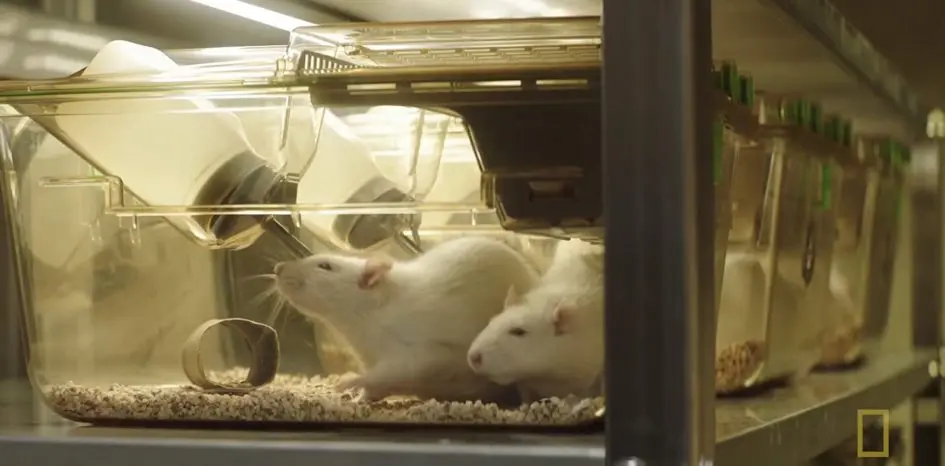Monsters come in all shapes and sizes and National Geographic Channel, which recently aired The Hot Zone limited series on three consecutive nights, might have created one of the scariest.
What would happen if a deadly pathogen was released on U.S. soil and government agencies prevented containment? It could become the biggest catastrophe within the United States’ borders. Based on the terrifyingly true story of the Ebola virus, it’s the things you can’t see that are the deadliest. Think about the best horror movies: the killer that lurks in the dark could be anywhere, which builds tension and can strike at will, when you least expect it. Such is the scenario as Ebola unexpectedly arrives on U.S. soil in the ’80s.
The hero never gets much support in horror movies, outnumbered against people who don’t know any better, who later get what they deserve, not stopping the Big Bad. The same thing is happens in this story. Adapted from Richard Preston’s 1994 best-seller, The Hot Zone: A Terrifying True Story, this limited series depicts the origins of the Marburg virus, along with Ebola and the similar strain, Reston virus, which was discovered less than 15 miles from Washington D.C. and the ground-breaking response that it affected.
When a newfound plague is mentioned, another character mentions the possibility of Zombies. As this is all-new territory that’s yet to be explored, that would have been an answer with a pretty predictable solution. Unfortunately, this is no common flu or threat of the undead.
“Fear keeps you sharp.”
Julianna Maragulies portrays Dr. Nancy Jaax, a ranking general in the U.S. Army, whose groundbreaking discovery may not get much support from the military, the CDC or the public. Many mistakes are made when identifying the problem, preventing it from spreading and trying to cure it, but the biggest mistake seems to be inaction, not taking the appropriate initial steps, thinking they would only be a nuisance in everyday life. Noah Emmerich (The Walking Dead, The Americans) doesn’t have a lot to do as Nancy’s husband, Lt. Col. Jerry Jaax, but his presence is powerful when he’s on the screen. James D’Arcy is always great (especially in Agent Carter and the Avengers movies), but even more so when his role turns from CDC good guy to antagonist and he must counteract the actions of our heroes. And what kind of hostile environment movie would be complete without a wacko mentor who was dishonorably discharged by the U.S. Army?
There’s no cure. No vaccine. And the military is more concerned with preventing a public panic than actually stopping the spread of the virus.
Technically an adaptation of a best-selling book, this is historic fiction as a limited series, featuring drama, science fiction and thriller genres. It’s not exactly science fact, but fictionalized science seems to be a better descriptor for this genre of television that National Geographic Channel has created, which is based on a true story. This is the type of scripted television series I hope the channel really continues to create, which is even better than past projects Mars and Valley of the Boom.
Diving deep into the Army’s Medical Institute of Infectious Diseases really intrigued me and I feel like some sort of reality-based series could easily highlight the accomplishments of our biohazard-suit-wearing workers who may not necessarily get much publicity.
It’s great to see Margulies back in scrubs — has it really been 10 years since she last wore them on ER? I didn’t realize Topher Grace was in this show and might have strayed from watching it, had I known. Ever since the end of That ’70s Show, the roles he’s chosen have been a little too similar. Sometimes good, sometimes bad, always annoying, he’s the smarmy young guy. After a few too many years of that stereotype, he’s playing an older — still sarcastic — character in the medical field and it feels like an original casting choice that actually works out in the long run.
This “inspired by true events” series was pretty good, even if the final episode, “Hidden,” felt like it wrapped too quickly and neatly for a story that dealt with a pathogen that constantly adapts and changes in order to survive, but sometimes true life is stranger than fiction.
“Someone will always survive.”
I’ve got to say I’m REALLY not a fan of cramming the entire series, consisting of six episodes, over a three-night broadcast event. I’ve read in the trades that it was done in order to meet the Emmy deadline at the last minute, trying to stay fresh in the voters’ minds, but as someone who considers binge watching a show as watching one episode per night (or two, max), it took me a little bit longer to review the whole series. I’m REALLY hoping this trend doesn’t become popular any time soon, as this quality show went in and out with a bang, instead of gradually building more media attention, and that may actually have a bad influence on its prospects for winning any possible awards, as well.
